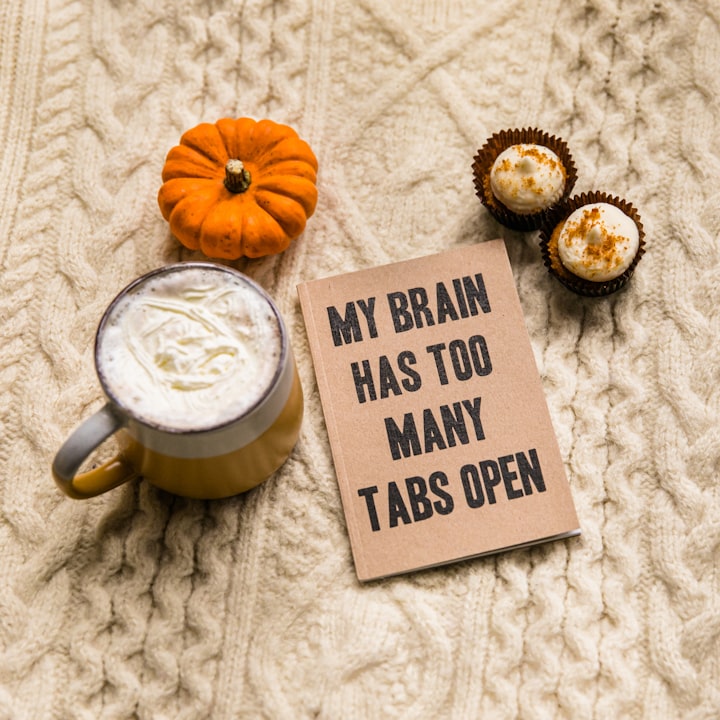My ADHD Life Hacks
My own story and some sanity-saving tips for life with ADHD

I’m an adult female living with ADHD (Attention Deficit Hyperactivity Disorder).
My fiancé said the thing that may appall others like me.
“You don’t seem like you have ADHD,”
I wasn’t mad because I understand where his perception comes from. Unfortunately, ADHD definition has been characterized a lot more through boys than girls, or perhaps even adults. He actually had a hyperactive little boy in mind when he said it to which I calmly explained ADHD manifests differently for me.
ADHD in a Nutshell
Medically speaking, the ADHD brain has trouble on its own creating chemicals necessary for focus and control. Medication is intended to correct this issue and other tools/strategies/mechanisms aim to channel symptoms.
But the ADHD brain is a conundrum too. It loves and hates structure but embracing some degree helps a person get by. It can be personable but self-conscious; assertive and aggressive, but sensitive. It always wants to be active, busy, or moving, but at the same time, multi-tasking isn’t always wise for it to do. It likes a lot but likes rather quickly. It is capable of focus (usually called hyperfocus), but often on its own terms and to the point of burnout sometimes. It’s not easy for it to just switch gears or slow down. Willingly or not, it often takes everything in but can also get overwhelmed by extremes, both internally and externally.
It’s comparable to a Ferrari engine in a clown car or a super computer processor in an older system. Just doing things, using a planner, applying ourselves, focusing, etc. can be more challenging because the ADHD brain has to slow down, dial in, gear up, recalibrate, reorient, and such. All largely due to funky brain chemistry and barrage of thoughts and mental energy that is more constant in it compared to others.
In fact, I've been crafting this blog in the back of my mind almost since having the inspirational conversation (which was only last night). It's itching in the back of my mind while starting my day and while having work tasks or other priorities at the forefront. I'm able to steal some moments while at work to get a few thoughts down, but I can't totally neglect my employment responsibilities for it. So the idea will still itch and beg for attention until its final form of a proofread, published blog article. That's just one day in my mind! Here's a little bit more about my life with it...
My Story
I was diagnosed around five years old. I had individualized lesson plans (IEP) early in school and I do remember being into a lot of extracurriculars like dance, cheerleading, art, music lessons, and Girl Scouts. This selection or diversity could’ve just been a mix of becoming socially well-rounded as well as channels for my ADHD-kid brain.
I hit adolescence and I did’t need the IEP anymore. I still dabbled in sports and loved reading and writing. I did well in high school so this particular part of my history was no huge thought. Stuff hit the fan in college (which is actually common) but only late in my experience did I ever think about ADHD again. I got on some medication and tried tapping into counseling and educational support. Along the way, I ran into some personal experiences that triggered anxiety and depression (which can be characteristic of ADHD in females).
Sometimes I think the efforts were too little too late for my intended ambitions but things worked out for the best in the long run. I'm happier and freer. You can’t always get what you want, but if you try sometime you find you get what you need, right? (like that Rolling Stones song stuck in my head all day too?)
My Life Hacks
There aren't necessarily IEPs for life outside education. So one has to make their own goals and accommodations. Here are some of my tips and tricks for getting through daily life with ADHD. I hope helps out someone else like me.
- Determine priorities and stick to them- Ask yourself what the most important things for the day are. For me most days, its work. Wedding planning is a close second, probably followed by some housekeeping and/or personal care. If it helps, maybe write down your priorities and plan time accordingly. But ultimately manage your important things before falling too deep into distraction or losing mental momentum.
- Use Knock Knock notepads- Lists are more fun with this brand! They're colorful, witty, inexpensive, and magnetic so you can stick them on the fridge. Some of the classic pads are open-ended, so you can write out what needs done or bought. While others are more of a checklist format if that is your preference. Personally, I use the "Things to do around the house" and the yellow "what to eat" pads.
However you want to keep a list though, you might write your to-do's as specific instructions. I.e. "take out kitchen trash", "sweep kitchen floor", "dust bedroom furniture", etc. instead of a generic "clean house". There's something about specificity that helps the ADHD brain be a little more efficient: it establishes a concrete goal, chunks down a bigger or broad task (like cleaning house) into smaller ones, and depending on your notepad or personal goals, you can implement a deadline and/or gain some satisfaction in checking it off.
- Relax with ASMR or sleep sounds- I've said it earlier, but sleep and relaxation do not always come easy for the ADHD brain. ASMR or sleep sounds offer gentle stimulation that quiets the mind. I've dabbled with these, and as of late, I've been on an ASMR kick. I like the gentle (often unintelligible) whispers, but there are a ton of other sounds within ASMR.
I've also tried the Relax Melodies app (ASMR and other features are paid subscriptions) and a storytelling podcast called "Nothing Much Happens: Bedtime Stories to Help You Fall Asleep".
- Use any kind of straightedge for reading- I often have to read rosters and lists that need to be typed into the computer at my job. I use a plain letter envelope to help me focus on one line of data at a time. You can use any sort of flat, straight-edged item for any similar task.
- Keep certain places for things- Make a habit to put the things you most frequently use in places you can easily find them when you need them.
I have a certain spot on the kitchen counter where I keep my purse. I have a certain pocket in my purse where I put my keys and phone so I don't have to rifle through said bag every time I need them. I keep my work badge lanyard in my car, hanging from the rearview mirror, or else I lose it and don't have a way to get into the office by myself. I try to keep my Blu-ray and TV remotes together and off the couch or else they get eaten by it.
About the Creator
Katie Johns
Random blogger and published short story writer-
https://kjohns323.wixsite.com/kjswritersblock/portfolio






Comments
There are no comments for this story
Be the first to respond and start the conversation.